Here are my top ten Cuba travel tips for your trip. I have a hundred more, but really, ten is plenty to think about at one time. In case you are a skimmer, here they are (read on for pics, details, and other top secret information):
- Listen to people, no really, LISTEN
- Bring everything you need
- Rent a car
- Stay in casa particulares
- Use hotels to change money
- Carry lots of coins
- Check for exhaust fumes before taking a long taxi ride
- Be selective about restaurants
- Read and learn before you come
- Eat outside
1. Listen to people, no really, LISTEN
We went on a listening tour of Cuba. Partially because we didn’t feel like debates were useful, interesting, or that we were well enough informed to do so. We listened to people—those who rented us rooms, taxi drivers, tour guides, waiters, peanut sellers, children, and anyone else who had a minute for us.
Cubans were open and very friendly. Once we started conversation, they told stories, shared their opinions, and really showed us what it was like to live in Cuba. We had several tour guides during our visit, but I have to admit that I often found their personal stories more engaging than the tours. In our last post discussing the surprises of Cuba we talked about the thriving community. We couldn’t have understood this so fully without listening with curiosity and engaging a wide variety of people.

Guy listening carefully to Julio, proprietor of Casa Muñoz, as he talked about his life in Cuba.
I admit, we have a bit of an advantage here. Jay’s Spanish is pretty excellent after having lived for three years in Spanish speaking countries…and the PhD in Spanish linguistics helps. That and his naturally outgoing personality make cross-cultural connections easier for us. There were many people that spoke English and even more that the non-Spanish speakers in our party muddled through in Spanglish.
One way that we were able to deepen our exchanges was to take people out for a drink or meal. Locals may not be able to afford a meal out, but we got so much out of spending unstructured time together. In Cuba and many other Spanish-speaking countries when you invite someone out, you pay. Te invito (literally, “I invite you”) is how you’d make it clear that it’s your treat.
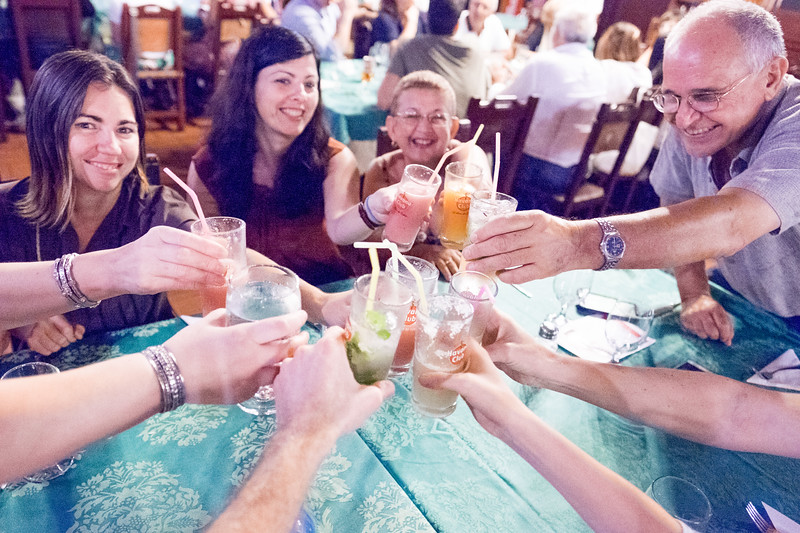
We really enjoyed taking Mauricio and Sara, our hosts in Havana, out to dinner with a couple other friends.
There is not one right answer to the big questions in Cuba. The only way to get to the complexity of the issues is to ask lots of people. We are sharing some profiles called La Vida Cubana of the people we met. They told us such amazing stories with passionate and differing points of view.
Beija got less obvious benefit out of this than we did, given that she was sometimes more interested in her book than trying to parse the conversation. I did share tidbits with her as we went along and Jay translated any questions we had. I am relying on what has happened in previous trips—that the learning emerges slowly over time and more is sinking in than is obvious at the time.
2. Bring everything you need
In previous posts I’ve encouraged you not to take some items, especially toiletries, and buy them in your destination instead. Cuba is not one of those places. Beija forgot to cut her toenails before our trip and I didn’t notice her raven claws until her sandals went on in Havana. Since there are no corner stores in Cuba we stopped by a pharmacy whose shelves were essentially empty. They sent us around the corner to the Victorinox store. Since pocket knives weren’t really what we were going for we skipped it. There have got to be nail clippers somewhere in Cuba. I didn’t see any Cubans walking around with six inch fingernails. Maybe they are just more comfortable with a pocket knife than I am.
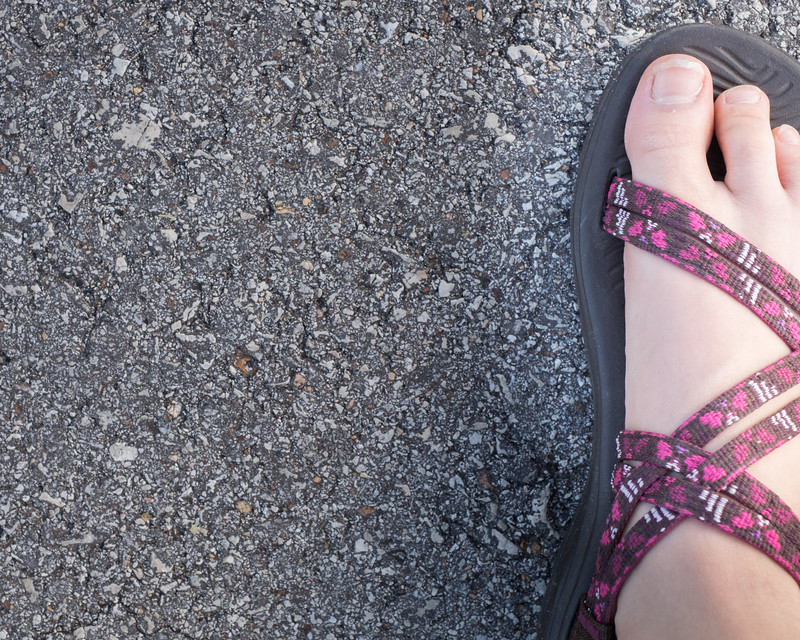
Can we get a nail clipper, please?
With all the wind, car windows that don’t roll up, and humidity Beija and I had hair as wild as a 90s glam band. I misjudged the quantity of shampoo/conditioner we might need during our time there. For a few days, I was jealously rationing our supply, interrogating anyone who suggested their hair needed washing. Several days later we found a hotel with a guest store and got a bottle of 2-in-1 Finesse. Beija and Jay were both much more relaxed when the pre-shower third degree stopped.
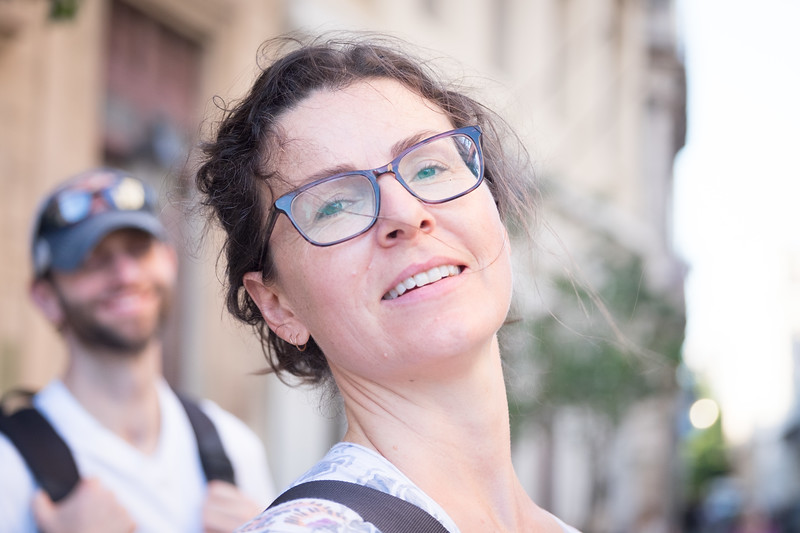
Crazy hair needs some conditioner. Poison or Motley Crüe?
Bottom line: do not count on being able to pick up a forgotten item once you are in Cuba. I’d slightly over-pack in the toiletries and first-aid department. Bring antibiotic cream, anti-fungal cream, nail clippers, band aids, etc. Beija had a run-in with impetigo (please do not look at google images of this or the stray dogs that we assume were the vectors) that could have been problematic had we not been getting on a plane home the next day.
3. Rent a car
Without a car, you are stuck primarily on the beaten path. That is not generally where we want to be. As I mentioned in our last post on Cuba surprises Connie and Guy, with whom we spent the second half of our trip, rented a car (see below for details on how to do this). It allowed us to get out of the main tourist areas and we drove through smaller towns and into the jungle.
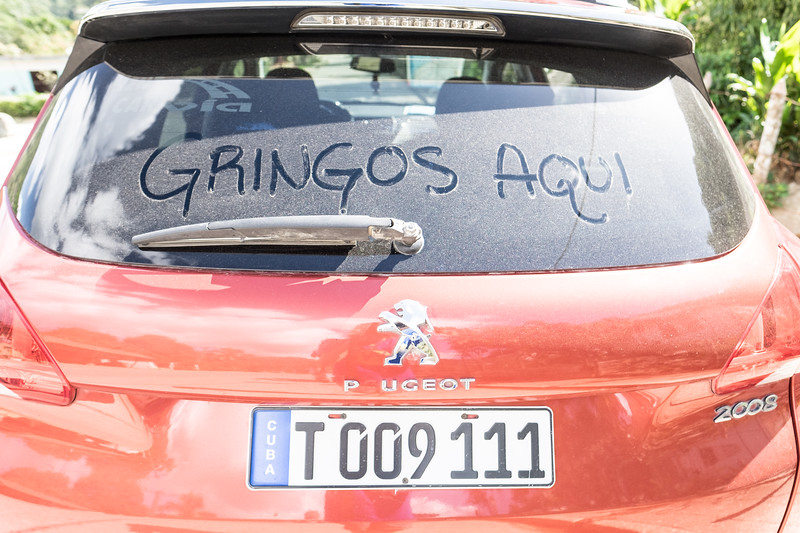
We thought we should warn people that our driving might be a little less confident than the locals’.
You could, as we did for the first half of our trip, take longer distance taxi rides, but we felt less able to meander and stop to enjoy something interesting along the way. Our 4-ish hour drive from Trinidad back to Havana cost $120. So even when you are trading off the benefits of not being responsible for the car, getting to have long chats with the taxi driver, and going with someone who knows where they are headed, you could easily exceed the cost of just renting a car yourself. It just depends what your priorities are.
Connie and Guy, being extroverts, decided to become a taxi themselves and picked up several hitchhikers along the way for conversation and to be of service. Transportation can be challenging for Cubans, you see loads of people looking for rides on the highway onramp areas.
If you do rent a car I wouldn’t drive at night. There are too many horse carts, bicycles, pedestrians, and animals on the road without head and tail lights. The consequences for someone you hit and the consequences for yourself if you hurt them (some sources note that drivers are jailed when there is an injury or fatality) outweigh the benefits of driving after dark.
Also, be prepared to compensate parqueros, the people who watch your car when you aren’t there and “guide” you into and out of a parking space. Again, it is nice to be able to put a few dollars (about CUC$2 per day, but negotiate this ahead of time) directly into people’s hands. Our car even got washed for us.
4. Stay in casa particulares
We stayed in casa particulares, the Cuban version of a Bed and Breakfast, for all but one night of our stay.
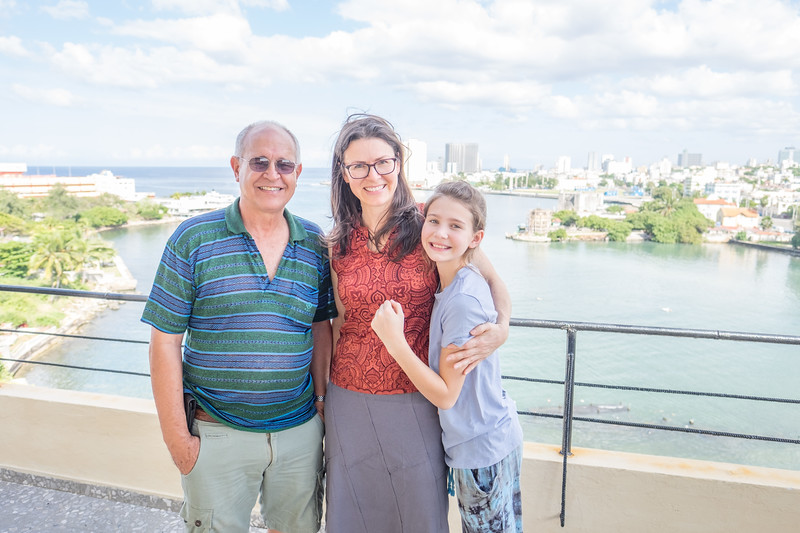
Mauricio welcoming us to our breakfast patio in Havana at his place, Casa Bellavista Havana.
Having seen a fair number of hotels (see below) I have no doubt that we made the right choice. Because the rooms were usually right in our hosts’ homes we had many more “real” experiences. For example, Beija got scolded for trying to catch a fuzzy gray chick by the grandmother rocking on the porch of the pink house we stayed in…and the indignant hen. We got invited to a lovely rooftop New Year’s Eve party replete with thumping reggaetón music and a full rotisserie pig with a tiny straw hat.
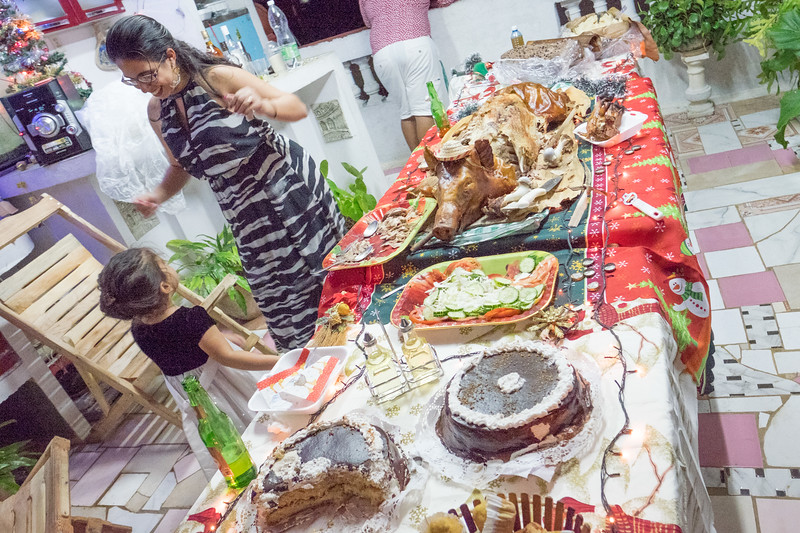
I can’t quite get over the hat.
I asked if I could help make Christmas dinner and got assigned to fry plantains, getting lots of “support” from Nancy and Amarilis who seemed sure I was going to burn them. Here is Amarilis’ flan recipe. None of these things would have happened if we stayed in hotels.
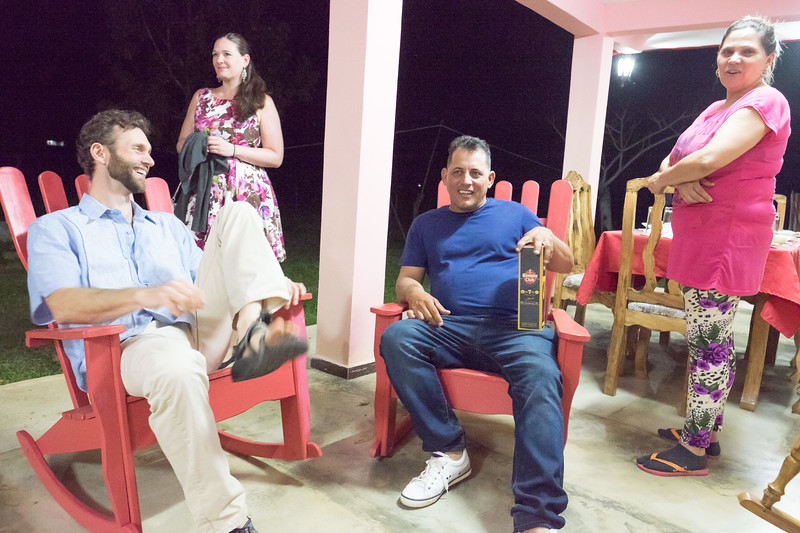
Carlos (El Cowboy), his wife Amaryllis, and their daughter-in-law Jenny on Christmas eve at our casa. He’s holding our gift of a bottle of rum.
The pervasive feeling I got in hotels was, “this is not Cuba.” Hotels were antiseptic, overstocked situations in which I felt as if I was getting a performance. All hotels are at least 51% owned by the Cuban government. Some are joint ventures with foreign companies. As I’ll cover in more depth in an upcoming post, I prefer to put money more directly into people’s hands.
This is not to say that there is no use for these hotels within the RK travel framework…
5. Use hotels to change money
A note, CUC$1 (Cuban Convertible Peso) is equal to USD$1.
Our friends waited in a two-hour line at the airport to change money. They find it almost impossible to see anything negatively and told us that they loved the opportunity to talk to the people in line. Even so, we counted ourselves lucky to waited only about 15 minutes even though they only changed $200 for us. The next day our friend Meiby introduced us to the best way to change money…big hotels! It was quick and easy. We saw lots of people waiting in lines in different cities at banks and formal currency exchange establishments. We skipped the lines and pretended to be staying at the fancy hotel instead-all we needed was a passport and money to change no one ever asked if we were hotel guests. I am planning a deeper post on budgeting and planning on money issues for Cuba soon.
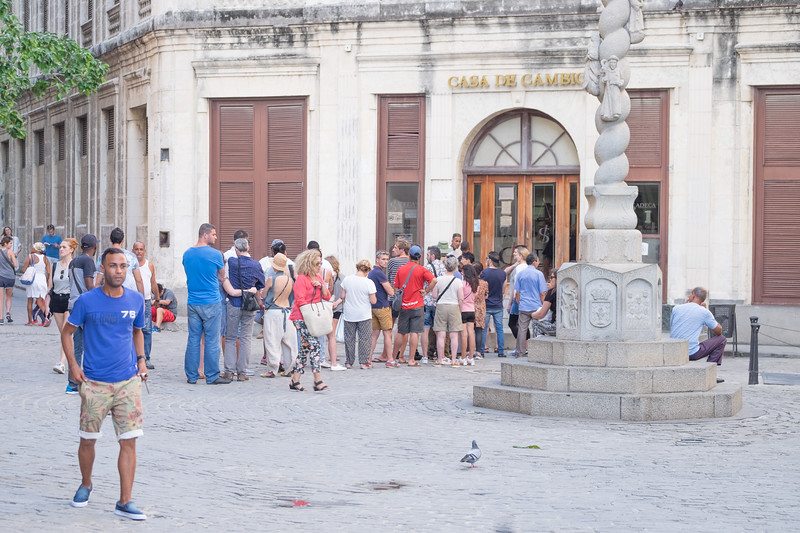
Long lines at the Casa de Cambio in Havana Vieja.
6. Carry lots of coins
There were so many times that we needed .25 CUC for the bathroom attendant or a sidewalk musician and only had a CUC$ 5 or 10 bill. When you have a chance to pick up some coins it is probably good to take advantage of it. The other option is to give a bit more to the person in need. I don’t mind this, but it is complicated of course—setting precedents of paying more for things creates expectations across the board. Beija dutifully took her coins to the bathroom with her, smiling politely and walking away when the attendant asked if she wanted toilet paper since she didn’t understand, then asked me to hand her some under the stall.
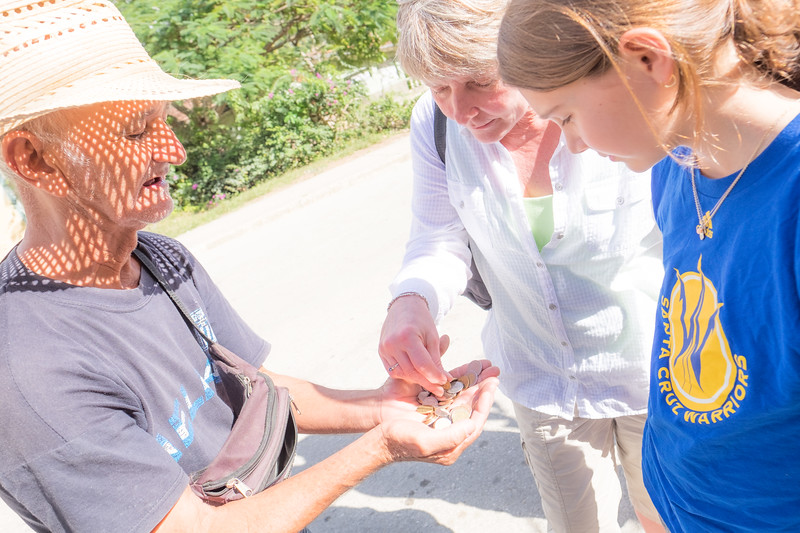
Manuel showing Connie and Beija coins.
7. Check for exhaust fumes before taking a long taxi ride
Exhaust fumes are not what you want your kids to be breathing. They can cause headaches, nausea, and dizziness even in relatively small doses. Although fabulous, the classic car taxis in Cuba are not known for meeting emissions standards. If you don’t want to drive yourself, as recommended above, taxis really are the best way to go in many situations (and provide nice opportunities for personal conversations). We took about 15 taxi rides within Havana and several long rides between cities. For short distances, we didn’t really mind which car we got, we just rolled down the windows if there was a handle to roll it down. Before long rides we made sure that we were taking a taxi that was a bit newer—only 20 years old rather than 50—and although it was never a real problem, we would have asked to switch taxis if it felt like we were breathing from the tailpipe.
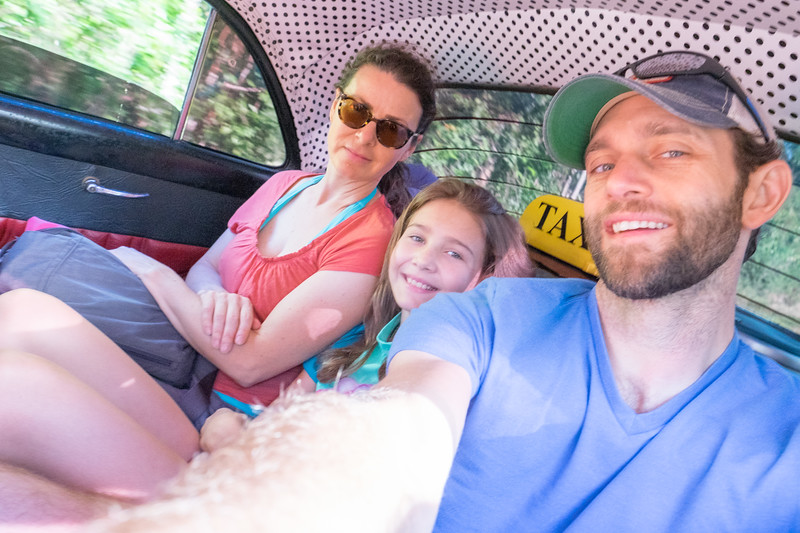
Short-ride taxi on the way to the beach.
8. Be selective about restaurants
You can pay $5 per person for a nice dinner or $50 per person. Is it worth it to spend the extra money? Sometimes. I’ll tell you though, if the $5 meal is 4 stars out of 5 then the $50 meal probably isn’t more than 4.5 stars. Tourist restaurants just don’t have the value for money that the local restaurants do. I’d go for the expensive places only occasionally. And if someone on the street tries to pull you into a restaurant around the corner I’d skip it. We did that a couple of times and it was downright meh…with a big price tag. I’ll list some of the more expensive places in Havana that I felt were worth the money below. Jay noticed with his Spanish that folks who bring tourists into the restaurant get a tip or surcharge from the restaurant. One busy tourist trap in Havana actually put the surcharge on the bill.
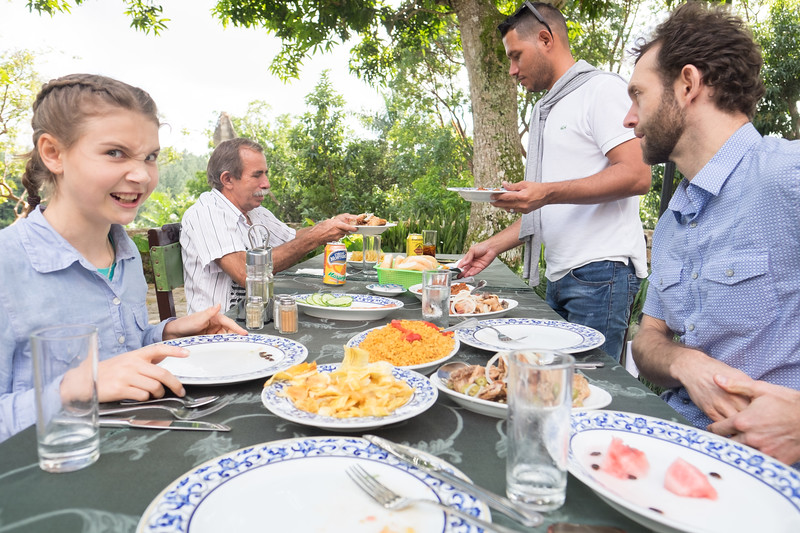
Rat-faced Beija at our lunch with our guide Kenny and our taxi driver Miguel at the coffee plantation in Las Terrazas. The food was pretty great.
9. Read and learn before you come
Most Cubans we met were very proud of their country and its history and genuinely feel that life for most Cubans before Fidel was hopeless, without economic or education opportunities. In order to deepen the conversations you have and build positive relationships it would be useful to do some research before you go. Just understanding the basic history of who controlled Cuba as colonial or financial powers would be a great start. There are several historical figures that get mentioned again and again – José Marti, Che Guevara, Carlos Cienfuegos, and others who would be good to know about. If you are going to read one book I’d start with Jon Lee Anderson’s Che Guevara: A Revolutionary Life. You can find that book and others in this post.
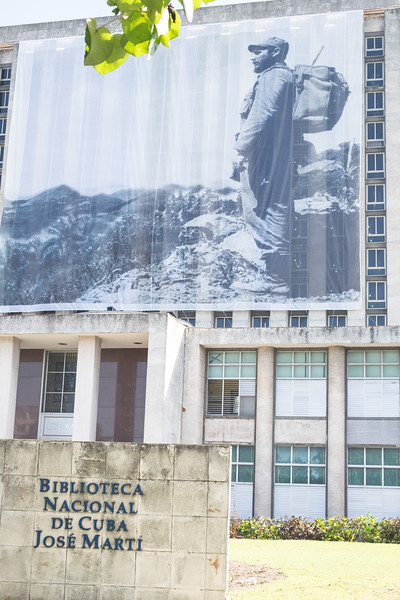
Two historical figures in one. There is a debate in Cuba right now about whether people will honor Fidel’s wishes to have no statues of him erected or streets named after him.
10. Eat outside when you can
Maybe this isn’t a real tip, just my strong personal preference. I LOVE eating outside and there are lots of opportunities to do it in Cuba. From rooftop decks, to interior courtyards, to sidewalk cafes, your opportunities are endless, a feast for the eyes, a welcome set of distractions for kids, and generally come with a lovely breeze and a bit of shade. I think my food tastes better in open air too, but I haven’t seen the research to back that one up.
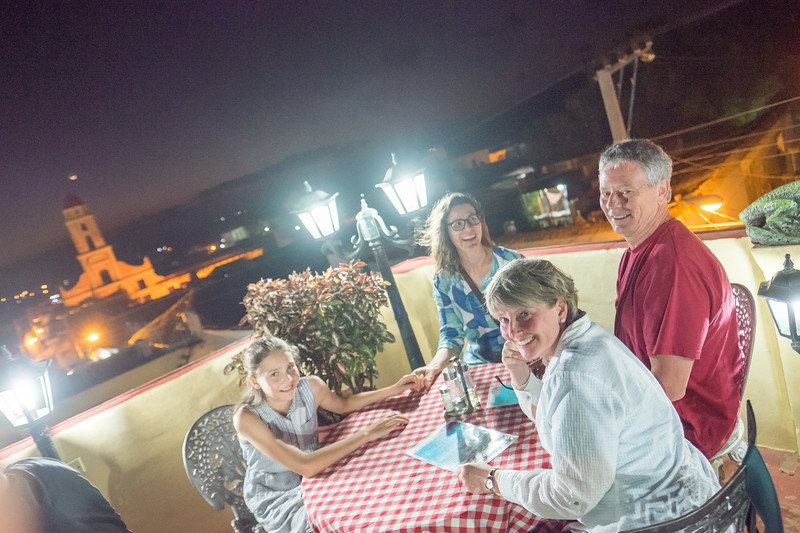
We loved this rooftop deck in Trinidad that featured a great two-man band. And we love our friends. They make everything more fun.
Your Turn
Car rental: Havanautos. We got a Peugot SUV (there were five of us) for one week for $630
Casa Particulares: Casa Bellavista Havana in Havana, Casa Munoz in Trinidad, Villa El Cowboy in Vinales
Restaurants: El Aljibe in Havana (Miramar), Tapas y Toros in Havana (Miramar), Ivan y Gusto in Havana (Havana Vieja), Buenavista Coffee Plantation in Las Terrazas, Gran Nena outside of Trinidad
Leave a Reply